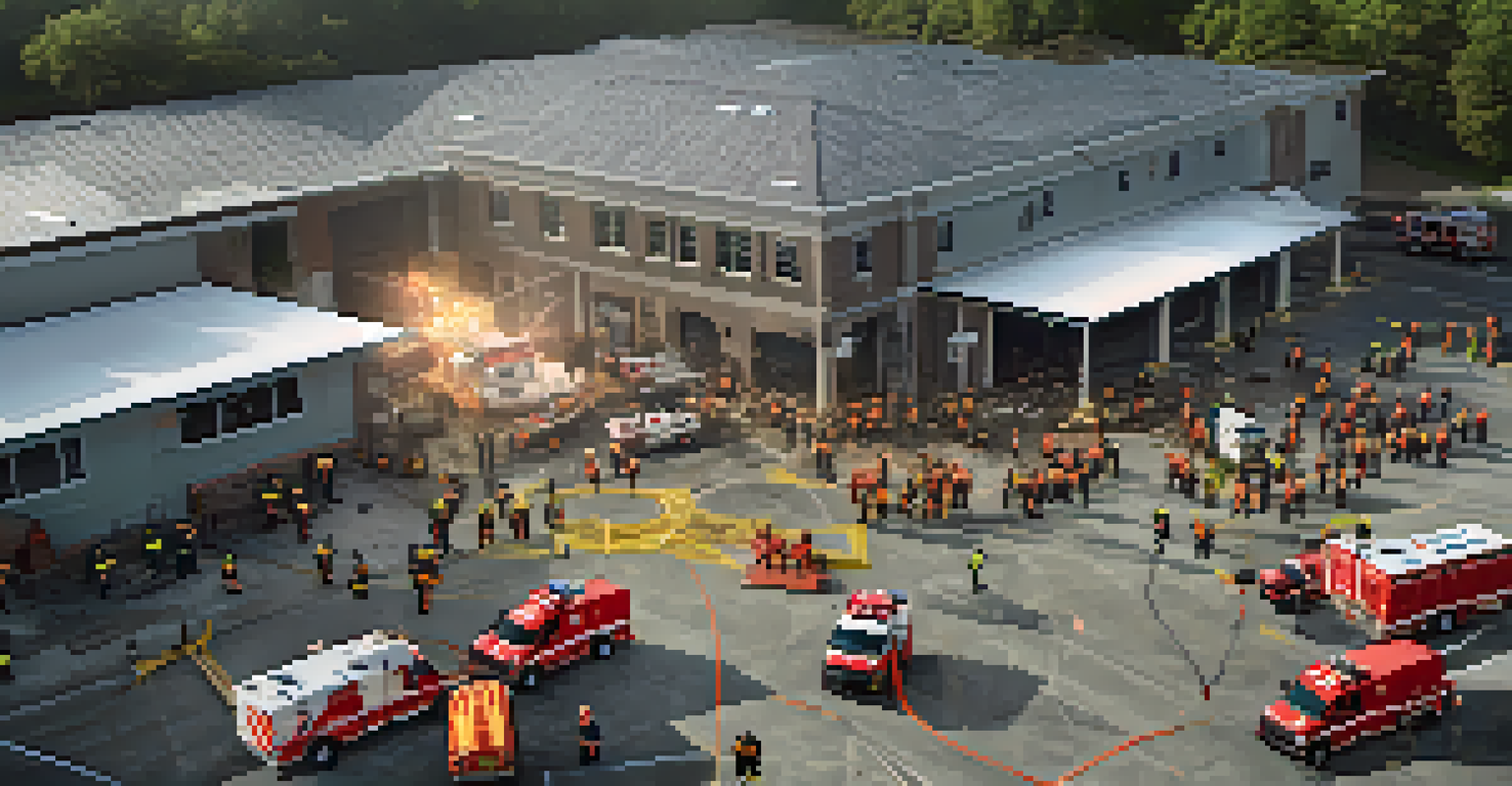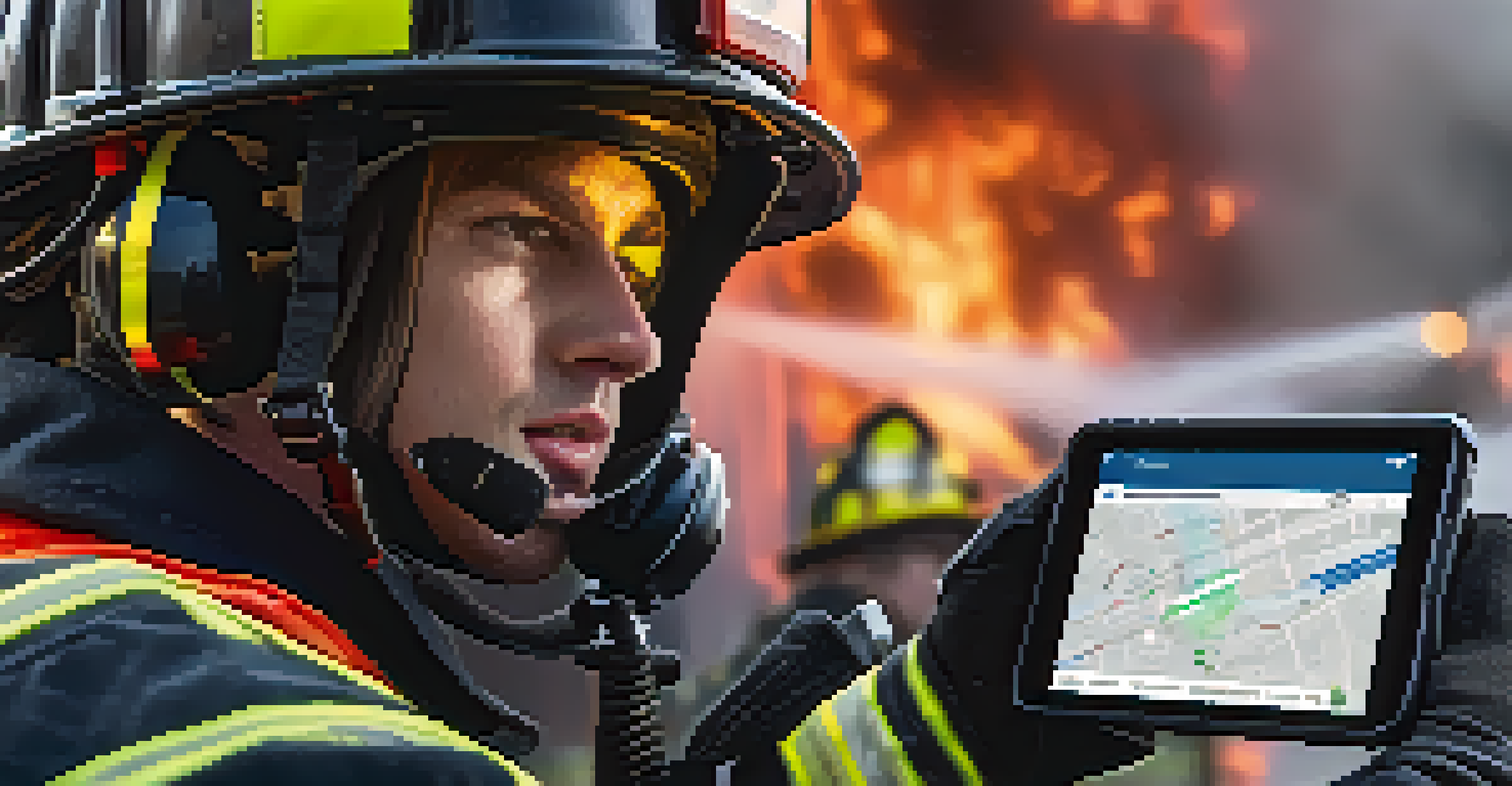5G Technology: Enhancing Public Safety and Emergency Services

Understanding 5G Technology and Its Promise
5G technology represents the fifth generation of mobile networks, offering faster data speeds and lower latency than ever before. This leap in technology not only enhances personal communication but also has profound implications for various sectors, especially public safety. The increased bandwidth allows for the transmission of large amounts of data, which can be critical during emergencies.
The future is already here – it's just not very evenly distributed.
Imagine a scenario where emergency responders can access real-time data from multiple sources simultaneously. With 5G, first responders can receive vital information from surveillance cameras, drones, and IoT devices in the field. This capability significantly enhances situational awareness during emergencies, allowing for quicker and more informed decision-making.
Moreover, 5G technology supports a larger number of connected devices, which can be instrumental in coordinating efforts during a crisis. This means that as more devices come online, the potential for gathering data and communicating effectively increases, thereby improving overall public safety outcomes.
Real-Time Communication in Emergencies
One of the key features of 5G is its ability to facilitate real-time communication among emergency services. In critical situations, such as natural disasters or terrorist attacks, every second matters. 5G's low latency ensures that messages and alerts are transmitted almost instantaneously, which can be crucial in saving lives.

For instance, during a severe weather event, emergency teams can share updates and coordinate their response efforts in real time. This level of communication allows for quicker evacuations and more efficient allocation of resources, ensuring that help reaches those in need faster than ever before.
5G Enhances Emergency Response
5G technology enables faster data transmission and real-time communication, significantly improving the efficiency of emergency services during crises.
Additionally, 5G enables seamless integration of various communication platforms, allowing different agencies to work together without the typical barriers posed by older technologies. This collaborative approach can lead to a more unified response during emergencies, ultimately enhancing public safety.
Enhanced Data Collection and Analysis
5G technology allows emergency services to collect and analyze data more effectively than previous generations. With the ability to handle massive amounts of data, first responders can access crucial information such as traffic patterns, weather updates, and even social media alerts during a crisis. This information can be invaluable for planning and executing effective responses.
Technology is best when it brings people together.
For example, a fire department can monitor real-time data from sensors placed within buildings to assess fire risks and gas levels. This proactive approach not only aids in firefighting efforts but also ensures the safety of the firefighters themselves.
Moreover, the integration of artificial intelligence (AI) and machine learning with 5G networks means that data can be analyzed on-site, providing actionable insights almost instantly. This capability empowers emergency responders with the knowledge they need to make informed decisions in the heat of the moment.
Improved Location Tracking and Navigation
Accurate location tracking is critical during emergencies, and 5G technology significantly enhances this capability. With its advanced location services, emergency responders can pinpoint the location of incidents more precisely, which is essential for timely intervention. This accuracy helps reduce response times and ensures that help arrives where it is needed most.
Imagine a scenario where a person is trapped in a collapsed building. With 5G, rescue teams can use enhanced GPS and geolocation tools to locate the individual with greater precision, guiding their efforts more effectively and potentially saving lives.
Advanced Data Collection Capabilities
With the ability to handle vast amounts of data, 5G allows emergency responders to access crucial information for more informed decision-making.
Additionally, 5G's ability to integrate with smart city technologies means that navigation systems can provide real-time updates on traffic conditions, road closures, and hazards. This information aids emergency vehicles in navigating the fastest routes to their destinations, further improving response times.
Enabling Advanced Robotics and Drones
The advent of 5G technology paves the way for advanced robotics and drone usage in public safety. Drones equipped with cameras and sensors can provide aerial views of emergency situations, delivering crucial information to command centers on the ground. This technology allows for a more comprehensive understanding of incidents as they unfold.
For instance, during search and rescue operations, drones can cover larger areas more quickly than ground teams. They can relay real-time video feeds, helping responders to assess situations that may be too dangerous for humans to approach immediately.
Furthermore, the low latency of 5G means that drone operators can control these devices with minimal delay, making them more effective tools during emergencies. This capability enhances the overall efficiency and effectiveness of emergency responses, ultimately benefiting public safety.
Strengthening Community Engagement and Awareness
5G technology also plays a vital role in enhancing community engagement and awareness during emergencies. With faster internet speeds and improved connectivity, local governments can disseminate information more effectively to the public. This ensures that citizens receive timely updates and instructions during critical situations.
For example, during a public health crisis, health departments can quickly share important information through apps and social media platforms, keeping communities informed about safety measures and available resources. This proactive communication helps residents prepare and respond appropriately during emergencies.
Community Engagement During Crises
5G facilitates timely communication from local authorities to the public, enhancing community awareness and engagement during emergencies.
Moreover, 5G enables community members to report incidents in real time, such as accidents or suspicious activities, directly to local authorities. This two-way communication fosters a sense of community responsibility and enhances public safety through collective vigilance.
Challenges and Considerations with 5G Implementation
While the benefits of 5G technology for public safety are clear, there are challenges and considerations that must be addressed. One primary concern is the need for robust infrastructure to support 5G networks. Upgrading existing systems requires significant investment, which can be a barrier for some communities.
Additionally, as with any technology, cybersecurity is a critical issue. The increased connectivity provided by 5G can also open doors to potential threats, making it essential for emergency services to implement strong security measures to protect sensitive data.

Moreover, there is a need for training and education for emergency personnel to ensure they can effectively leverage 5G technology. This preparation is crucial for maximizing the benefits of 5G in real-world situations, ensuring that responders are well-equipped to handle emergencies efficiently.